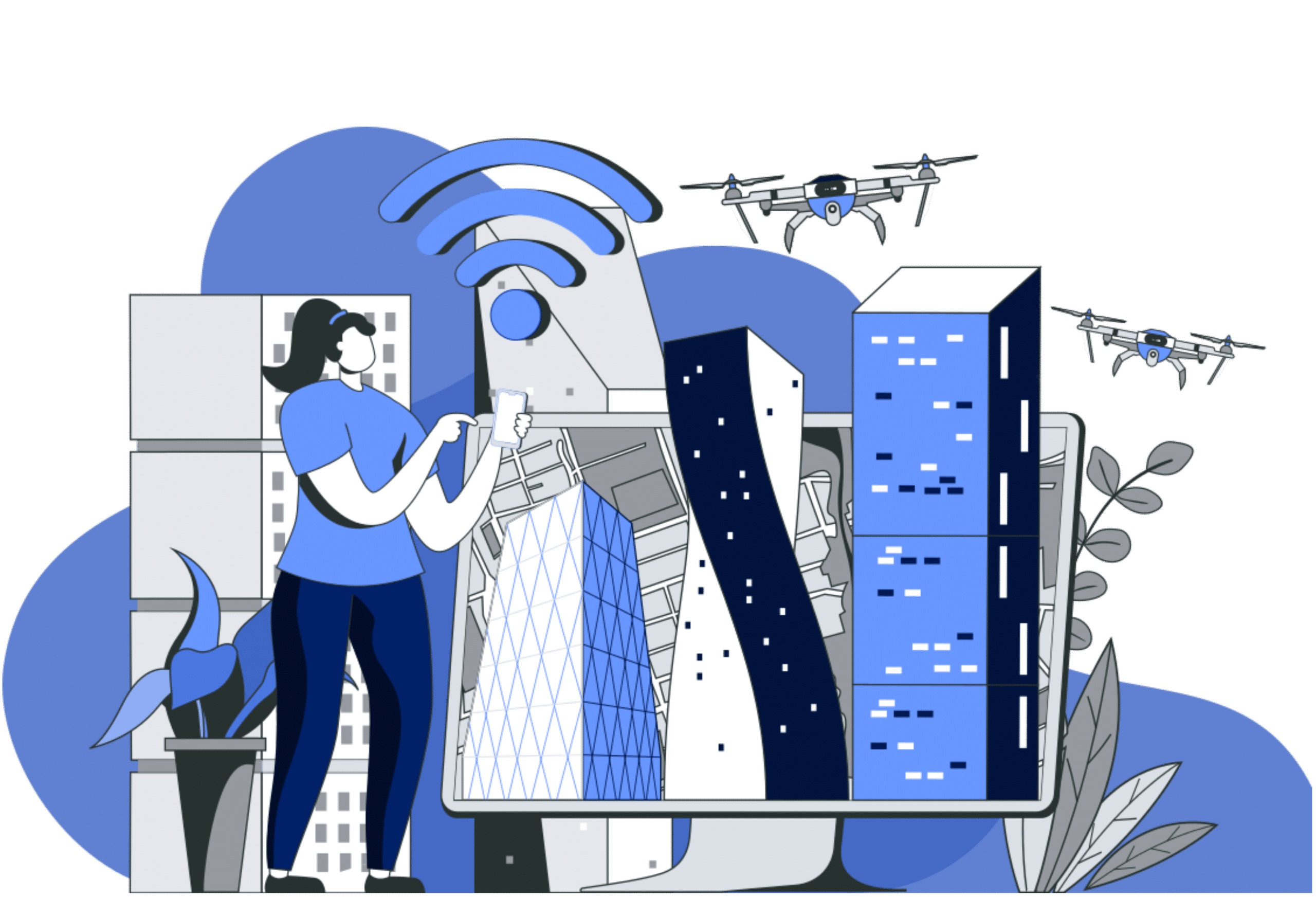Introduction: The Growing Demand for Energy
The demand for energy is on the rise, while energy production is reaching its limits. At the same time, urban populations are growing, creating higher energy needs and challenges for people’s daily lives. In addition, the adoption of electric vehicles (EVs) adds new requirements, including the establishment of relevant infrastructure, vehicle charging monitoring, and implementing billing systems. Moreover, there is a need for protection against hazards such as short circuits.
Smart Homes and Smart Buildings
Research is increasingly focusing on integrating energy production capabilities within buildings. The goal is to achieve more efficient energy usage and improve building infrastructure, making them more functional and sustainable for users.
Smart homes and smart buildings have significant requirements in areas such as comfort, accessibility, security, and energy management. These demands can be effectively met using IoT systems. For this reason, smart homes and buildings are a particularly advantageous area for IoT implementation.
IoT Solutions for Smart Homes and Buildings
The platforms used in these environments rely on intelligent sensor networks, smart meters, and devices to provide real-time status information. These systems automate functions, monitor environmental conditions, manage energy efficiently, and assist vulnerable populations. Ultimately, they improve the overall quality of life for residents.
The Growing Market for Home Automation
The market for home automation and security systems is growing rapidly. As a result, an increasing number of people are adopting smart home solutions, further driving the development of related technologies.
[1] Chu K., Turatsinze E., Chang K., Zhou Y., Chang F., Wang M., 2021, A Survey of Common IOT Communication Protocols and IOT Smart-X Applications of 5G Cellular, Advances in Intelligent Information Hiding and Multimedia Signal Processing, p.p. 114–122, Springer Singapore,
Singapore, ISBN: 978-981-33-6420-2, https://doi.org/10.1007/978-981-33-6420-2_15
[2] Cristina Stolojescu-Crisan and Calin Crisan and Bogdan-Petru Butunoi, 2021, Access Control and Surveillance in a Smart Home, High-Confidence Computing, vol. 1, nr. 2, September 2021,
Elsevier, https://doi.org/10.1016/j.hcc.2021.100036
[3] Arun Kumar and Sharad Sharma and Nitin Goyal and Aman Singh and Xiaochun Cheng and Parminder Singh, 2021, Secure and energy-efficient smart building architecture with emerging technology IoT, Computer Communications, vol. 176, nr. 1, August 2021, Elsevier,
https://doi.org/10.1016/j.comcom.2021.06.003
[4] Zahra Foroozandeh and Sérgio Ramos and Joao Soares and Zita Vale and Maurício Dias, 2021, Single contract power optimization: A novel business model for smart buildings using intelligent energy management, International Journal of Electrical Power & Energy Systems, vol. 135, nr. 107534, September 2021, Elsevier, https://doi.org/10.1016/j.ijepes.2021.107534
[5] Cheng Lyu and Youwei Jia and Zhao Xu, 2021, Fully decentralized peer-to-peer energy sharing framework for smart buildings with local battery system and aggregated electric vehicles, Applied Energy, vol. 299, nr. 117243, October 2021, Elsevier,
https://doi.org/10.1016/j.apenergy.2021.117243


